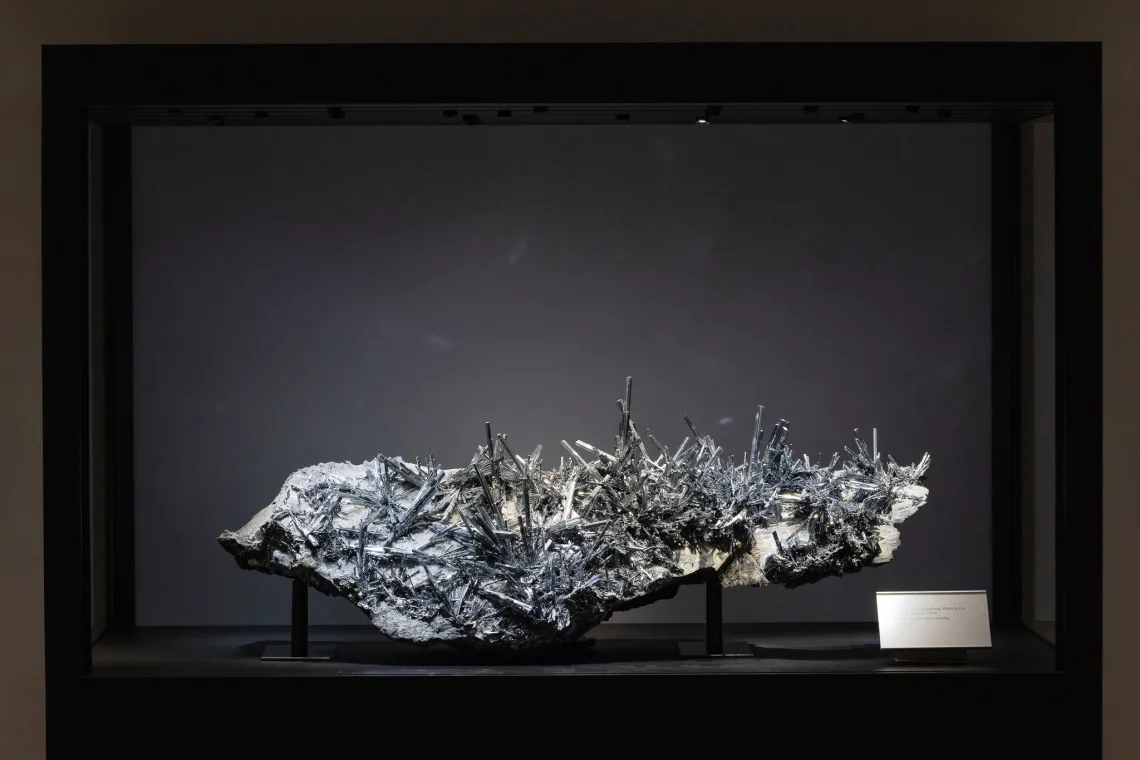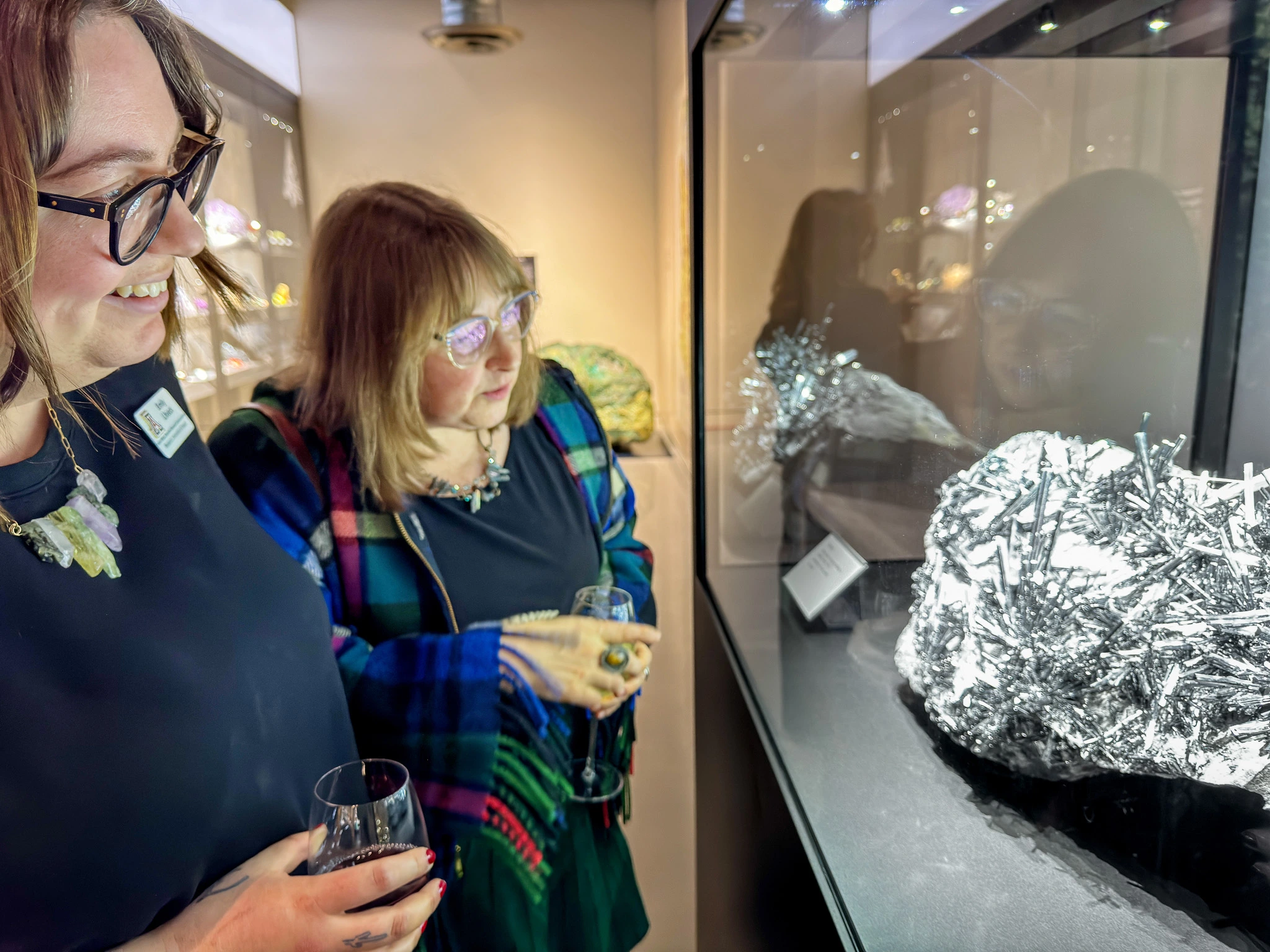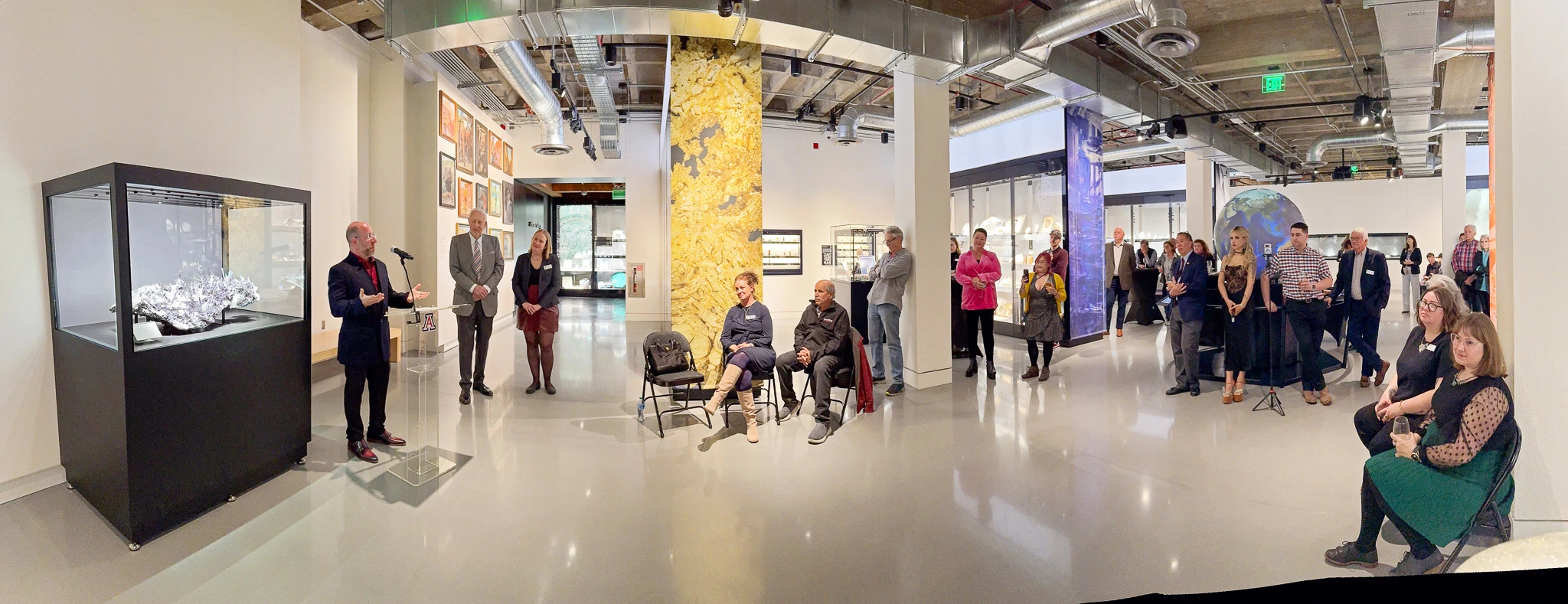A Rare and Intricate Beauty
UArizona’s gem and mineral museum receives a stibnite specimen.

Ancient Egyptians used powdered stibnite as eyeshadow.
Photo: Chris Richards
Opaque and gleaming, metallic gray with long, spear-like, prismatic crystals, stibnite is a compound of antimony and sulfur originating roughly 130 million years ago.
The mineral has a storied history of human use that spans centuries and societies. As early as 3,100 B.C., ancient Egyptians powdered stibnite to use as eyeshadow and to treat eye infections. In ancient Rome, stibnite was associated with Pluto, ruler of the underworld. Later, the Prophet Muhammad claimed that stibnite cleared one’s vision and promoted hair growth.
The University of Arizona Alfie Norville Gem and Mineral Museum received a massive, rare stibnite specimen from Robert Lavinsky, a world-renowned mineral collector, science education advocate and longtime supporter of the university. The unveiling coincided with the 2024 Tucson Gem and Mineral Show, the largest and oldest gem show in the world. Extracted in 2003 from the Wuling Mine in the Jiangxi Province of southeastern China, the stibnite specimen is now part of the museum’s permanent collection and on display for public viewing.

Allan Norville and Robert Lavinsky
Photo: Cory Aaland
Stibnite is brittle and soft, scoring only 2 out of 10 on the Mohs Hardness Scale, which mineralogists use to grade the relative hardness of minerals. Because of this, stibnite crystals are not often found complete, which makes a specimen of this size, intricacy and quality exceptionally rare. Only a handful of such specimens exist, all of which were extracted from the Wuling Mine in the early 2000s.
In addition to donating a stibnite specimen to UArizona, Lavinsky has donated one to the Yale Peabody Museum.
“Both Yale and UArizona share my vision of a ‛beauty first’ approach to education, displaying valuable specimens of minerals as inspirational works of natural art,” says Lavinsky. “As a lifelong collector, it is an honor to make this joint donation to two such worthy museums and to share the inspiration and awe that these specimens evoke in me.”


